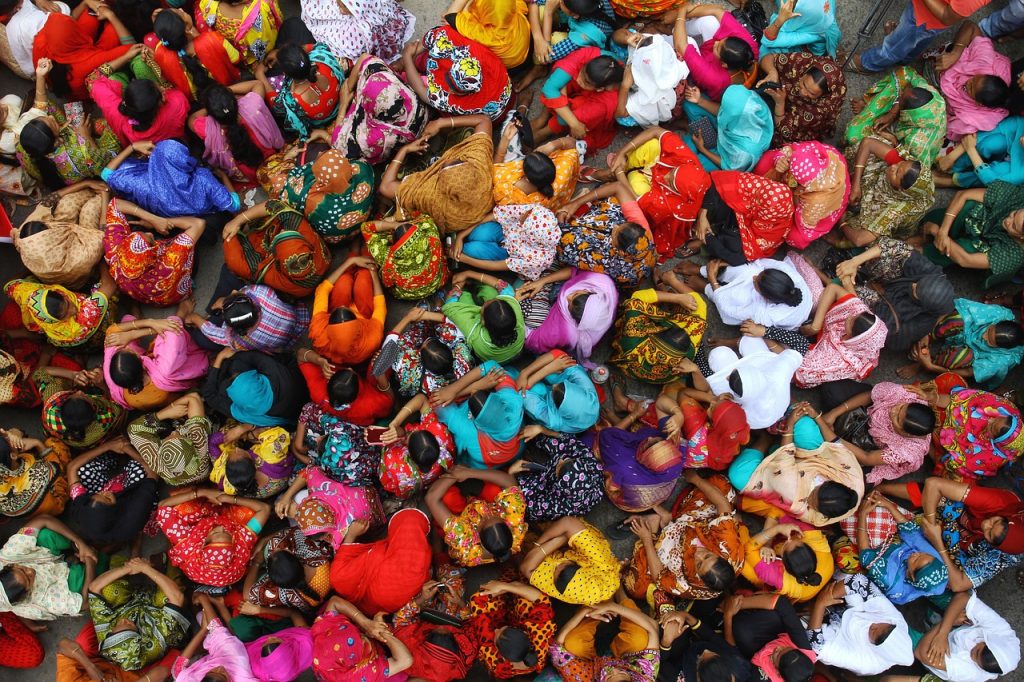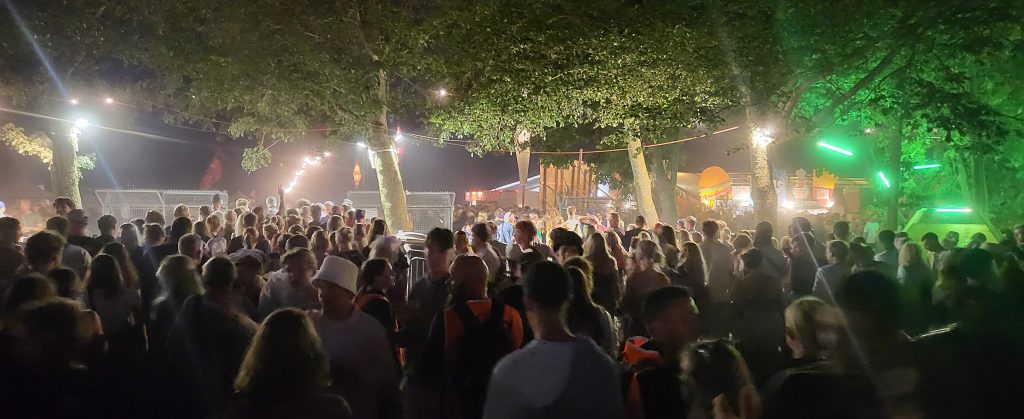We have to do the Maths...
Crowd management is a combination of disciplines – including mathematics. The numbers for your event or venue must be crunched.
Fortunately, there are only a few key figures and calculations required. Following extensive research, guidance provides these numbers as best practice and assists organisers to device safe plans. The key figures relate to crowd density and crowd flow rates.
Density is how close together people are, how many people are in a given area, and is most often given as a figure per metre squared (pm2). It can also be shown as how much space is given per person (metres squared per person). These two numbers are the inverse of each other.


Density and capacity are two different things (see the discussion article explaining this further). Density is most often the proximate cause of crowd related injuries and deaths. Once too many people are in a given space they become unable to breathe.
The density at which this happens varies but experts agree that once crowds exceed 6ppm2 (people in one square metre of space), they are congested and unstable and injuries can begin to occur.
Given crowd density is variable throughout an event and often crowd led, guidance focusses on capacity calculations to encourage sufficient space across the event site for audiences to move to lower density areas should they choose. The industry led Purple Guide (Health, Safety and Welfare at Outdoor events) suggests a figure of 2 ppm2 is used to calculate a safe capacity, whilst the Green Guide (Safety at Sports Stadia) suggests 4.7 ppm2 is the appropriate figure to asses a standing terrace capacity.
When calculating the safe capacity at your own event you should quote guidance documents and evidence why you have chosen to use a particular figure. Guidance attempts to cater for a vast array of differing venues and event types. If you decide to stray from the provided figures you should explain why you believe this is appropriate as well as detail what experience, training and qualifications you have to justify this decision.
Assuming you decide to use 2 ppm2 when calculating your capareas of low density acity. You must ascertain the available usable space at the venue – this may require using Google Earth measurements or scaled drawings. Next you simply multiply these two numbers. An area of 100 metres squared will have a capacity of 200 people in this instance.
You cannot calculate the density – you cannot tell exactly how your audience will use your space. At some events the crowd will choose to group in high densities, for example at the front of a music gig or festival. However, by understanding the guidance figures and being able to recognise and assess relevant densities, you can mitigate dangerous situations. Employing experienced and qualified crowd managers is recommended. Appropriate capacity calculations can assist is density management. Provided the maths is applied properly, the capacity will allow for areas of low density, which in turn can be used by crowd managers when applying management techniques.
If you are provided with the inverse figure of metres squared per person (some promoters prefer this method of capacity calculation) then instead of multiplying the two numbers you divide the available space by the area per person. Below is an example…

A hypothetical event at Trafalgar Square where the available audience space has been decided and is shown within the boundaries of the yellow line. This area is 2455.23 metres squared (Google Earth used to establish this).
If the Purple Guide’s 2 people per metre squared was deemed appropriate, then the capacity would be set at 2455.23 multiplied by 2 = 4911.
If the organiser had agreed with a promoter’s figure of 0.25 metres squared per person then the capacity would be set at 2455.23 divided by 0.25 = 9821.
2ppm2 is the same as 0.5 metres squared per person (one is the inverse of the other)
0.25 metres squared per person is the same as 4ppm2
The figure chosen to work out the capacity will depend on a wide range of factors. An experienced, qualified crowd manager can assist in determining this.
Flow rate refers to how quickly people can move whilst part of a crowd. Whilst this is related to density it is not simply the case the the more people in a crowd the higher the flow rate. Researchers have shown there is an optimal flow when crowds are at a certain density. As density increases beyond this point, the flow rate decreases as people find it harder to move.
Flow Rates can and must be calculated. Crowds are most vulnerable when they are moving at high densities and by making appropriate flow calculations, crowd managers can ensure sufficient space and appropriate site design to mitigate the risk of dangerous situations.
Key figures, based on research, are provided in guidance documents and have been widely accepted throughout the industry.

The maximum flow rate on a flat surface is 82 people per metre per minute.
The maximum flow rate on a stepped, sloped or uneven surface is 66 people per metre per minute.
The maximum flow rate through turnstiles is 11 people per minute.
All bona fide crowd managers will be familiar with these figures and be able to apply them to event and venue settings. The most restrictive width of any design should be used to calculate the flow rate. Below are a series of examples to illustrate these points.

The flow rate per minute into Area A would be 7.5 (meterage of the entrance) x 82 (maximum flow rate on a flat surface) = 615
The flow rate per minute leaving Area A would be 6.5 x 82 = 533
Assuming Area A is used as a walk through from one stage to another; applying these basic calculations allows a crowd manager to show that every minute the number of people in Area A will increase by 82 people. If A has an area of 400 metres squared we can show that after 19.5 minutes it will reach an average density of 4 people per square metre and crowd management techniques may be required.
(82 x 19.5 = 1599 people in area A. In an area of 400 square metres this represents an average density of 4 people per square metre)
The flow rate through Area B would be the opposite. Entering the system at a rate of 533 people per minute and leaving at a rate of 615 people per minute. Therefore, assuming there are no other restrictions after leaving the area, there would be no build up of people as with area A.
Applying these simple calculations assists in applying appropriate crowd management techniques. For example, it may be decided that Area A increases the risk of congestion and high density therefore this area is closed and crowds are instead encouraged through Area B
This is a basic example and a range of other factors will likely contribute to crowd movement. However, when combining these calculations a site can be assessed and a crowd can be appropriately managed to maintain safety.
The next example shows the approach to a sports stadium.
Area A, the covered footbridge, has dimensions of 5m x 60m providing an area of 300m2. Area B, the stairway leading down from the bridge, is 6m wide and 16m long thus 96m2. Area C is the walkway leading onto the stadium footprint with a width of 8m, a length of 54m and subsequent area of 432m2 and Area D covers the narrow footpath which slopes down from the bridge into the car park, with dimensions of 2m wide, 66m long and area of 132m2 . Immediately, this simple technique demonstrates potential pressure on areas B and D depending on the flow rate within area A.

An area of 300m2 is reduced into a stairway of 96m2 and a narrow passageway of 132m2 totalling 228m2 . Whilst the stairway is slightly wider than the bridge, the flow rate will be reduced as people negotiate the stairs. Without applying any equations, flow rates or densities at this stage the breaking down of areas provides an event organiser with a visual representation indicating areas of concern and the need for relevant management or control measures to be implemented
If you are interested in working through the flow rate figures, or want to have a go yourself, please leave a comment or get in touch.
If you would like to talk through any figures at your events or venues then again, please get in touch
